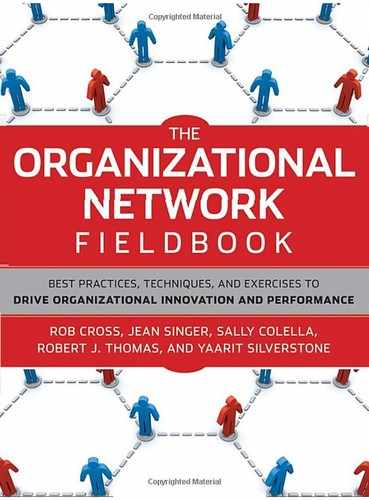Chapter 11. A WORKSHOP FOR ALIGNING NETWORKS WITH STRATEGY
Sally Colella
Consider this familiar scenario: a leader has an idea for a new business strategy that could substantially boost performance—an idea that requires previously isolated groups to coordinate their efforts. Excited by the possibilities, he spends a lot of time thinking through the details and scripting his remarks to the employees who will be implementing the strategy. But after the big announcement, nothing much happens. Those on the receiving end are confused. They know that they're supposed to be doing something—and something different from before—but they may not understand how they fit into the larger plan or how to collaborate with people they don't know well to deliver on the promise of the new strategy. So they shake their heads and revert to the tried and true, leaving the leader to wonder why nothing is changing.
I encountered just such a challenge when I was an internal organization development consultant in a large financial firm. I was working closely with a leader I'll call Bill, who had joined the firm about a year earlier and was working with the management team of the division he led, which I'll call BizTech, to create a new strategy for serving clients.
The various product-development teams within BizTech were used to working on their own standalone products, which they sold individually to clients. Under the new strategy, those teams would be expected to integrate their products and services into end-to-end solutions. Moreover, employees in marketing and client-facing roles would need to work closely with analysts and programmers to translate clients' needs into product solutions. The result of this holistic approach, Bill hoped, would be increased revenue and customer satisfaction.
Bill, who was very enthusiastic about the new strategy, proclaimed its virtues at multiple town-hall-style meetings with BizTech employees and had begun to describe the new approach to other leaders at the firm. He found, however, that employees did not understand what he was trying to describe. At meetings, he was peppered with questions about the strategy that reflected employees' confusion in translating his strategic language, such as "end-to-end solutions," into a new way of working. They seemed lost, and some seemed skeptical, rolling their eyes whenever the topic came up. Bill suspected that these employees thought the talk about a new strategy was all hype, a bunch of buzz words. Despite his efforts, Bill observed that most people clung to their individual teams and work processes—the exact opposite of the cross-product and cross-disciplinary collaboration the strategy required.
Of course, Bill and his management team needed to institute various organizational design and process changes to execute the new strategy, but we both thought that the most essential changes needed to take place inside employees' heads and in their relationships with one another. Before they could fully embrace any new work processes or restructuring, they needed a solid understanding of the goals of the new strategy and of the collaborative ties they would need—ties that crossed product and functional lines—to make it a success.
So, Bill and I worked together to create a day-long workshop designed both to educate employees about the concepts behind the strategy and to help them begin building the collaborative networks necessary for implementing it. To cover the entire BizTech division, which had roughly 250 employees, we conducted 10 of these workshops over several weeks with groups of about 25 people. This design could work well for divisions with as many as 300 employees.
Because one of the primary goals of the workshop was to introduce BizTech employees from different teams who would need to start working together, we wanted each workshop group to include people from various pockets of the division who did not already know one another. Ideally, we would have conducted a network analysis of the entire division and used the results to hand pick the attendees for each workshop. With information about what cross-team ties did and did not already exist, we could have created highly targeted workshop groups. Because we did not conduct an ONA—although participants did take a personal network assessment (PNA) before the workshop—we instead made sure to include in each workshop people from different product groups, hierarchical levels, tenure bands, and disciplines.
